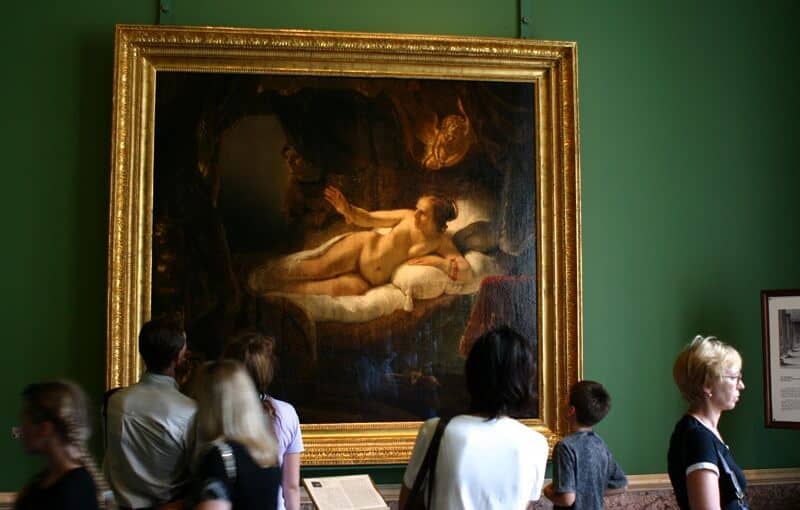Danae, 1643 by Rembrandt van Rijn

In 1636, Rembrandt created his undisputed masterwork among the mythological subjects of the thirties, if not his most beautiful painting of this entire period: Danae. Among the many
darkish Rembrandts in the Hermitage this picture's sunny quality is an immediate attraction. It strikes a chord of youthfulness and sensuous delight that is rare in Rembrandt's work, and it does not
lack the human warmth and air of mystery characteristic of Rembrandt's best creations.
There has been much discussion about the meaning of the painting, and various Biblical and mythological subjects have been suggested. These, to mention only a few, include 'Rachel Awaiting Jacob'
'Venus Awaiting Mars', 'Hagar Awaiting Abraham', 'Leah Awaiting Jacob,' and 'Danae'; this last interpretation means a return to the traditional title with a new and more convincing explanation.
It has always been clear, however, to every interpreter, that the focus of the scene lies in the young woman's happy expectation of the approaching lover, who is still unseen but for whom the old
maidservant lifts the curtain.

The crying cupid, with hands bound - in obvious allusion to the heroine's story - symbolizes some obstacle to her happiness. Former objections to the title Danae were based upon this unusual attribute of the fettered cupid and the absence of the golden shower. The bound cupid, a symbol of chastity since the Middle Ages, alludes to the rigid seclusion to which Danae was condemned by her father, the Argive king Akrisios. Warned by an oracle that the son of this daughter would kill him, he kept the princess in strictest isolation.
Titian deals with the same subject in his Danae Receiving the Golden Rain. But Rembrandt's treatment of Danae's movement is more natural, yet the pictures's sensuous appeal remains strong.




















